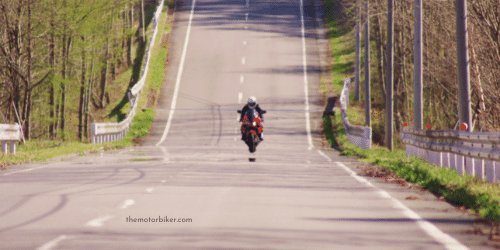Motorcycles are always effective, whether for daily commuting or fun riding. But you may encounter some problems if you’re slightly shorter than required to ride a motorbike, especially the big giants from BMW or Harley. Usually, any height over 5’6” is good enough to ride keeping your bike as it is (no modifications). But the riders with 5’6” height or below probably require specific modifications to their two-wheeler, particularly lowering it. This article shall discuss very precisely how to lower a motorcycle.
Lowering the Seat
If you do not want to go DIY, you can buy a relatively low seat directly. Plenty of brands produce seats that are not only low but also adjustable – meaning you can convert those from low to high or high to low if you want, as much as one inch. However, try to find and buy a seat as low as you need according to your height – meaning the perfect match.
If you buy a lower one that matches your size, only the installation is enough but nothing additional. But if it’s an adjustable one, you have to put some effort. Initially, loosen the pinch bolt where you see the Seatpost sliding into the seat frame. Twist the seat, when loosened, to lower as much as you need or maximum. Now get on the motorcycle seat, placing the ball of your foot on the pedal spindle top directly while the crank stays at the rotation’s bottom. Just reverse the process when necessary to get the seat raised.
But, if you aren’t hesitant about DIY, you can customize the existing seat. If it does not have any lowering or raising (adjustability) feature, remove the cover and shave down the foam. Get a new cover and reupholster following a few easy steps.
Lower the Shock and Fork
If you can’t get your foot close enough to the ground even after lowering the seat through foam removal and adjustment, it’s time to apply a mechanical method. Technically, you can lower your bike directly by as much as 1.5 inches. Use it as a last resort, as you will experience reduced cornering clearance, altered bike handling, and a useless side stand. To solve those, you’ve to take help from a professional bike repair shop, and, of course, that will cost a good sum of money. That’s a different topic; here we’re on the subject – lowering suspension and forks.
Shortening them internally is the safest mechanical method so far. To keep the ride quality standard, this is by far the most effective way, although you’ll have to spend a handsome amount compared to any other way, particularly the DIY route. Expensive and good-quality shocks will provide more room for such internal shortening.
Usually, most rear shocks use linkages called “dog bones”. By installing different-length linkages, you can drop the backside of your motorbike, which will automatically lower the saddle. You just have to properly fine-tune the length ( (hole spacing & threaded setups) of links.
But don’t stop there. You’ve to reduce the front ride height by the same amount to ensure a safe chassis attitude. Loosen the triple-clamp bolts screwed to the fork and slide up the fork legs while lowering the front part. You should do it so delicately so that there’s the right clearance between the lower triple clamp, fender and radiator. Ensure that none of these makes contact with each other when the suspension compresses during braking.
Lowering only the Front or Rear
Experts always discourage lowering a single part of the motorcycle. You should never lower the front part, as it goes against both functionality and safety. Indeed, you can still functionally ride by lowering the rear part only, despite being unsafe, but we always advise reducing both parts.
Last Words
That is all of how you can lower a motorcycle. Reducing seat height through foam removal or adjustment is not risky and impactful to your bike’s functionality. If that is enough to ensure your desired height, we suggest you keep yourself with it only.
Saying again, go for the suspension and fork lowering as a last resort. Last but not least, make sure you understand the riding dynamics and chassis geometry of your motorcycle before applying the mechanical method.


